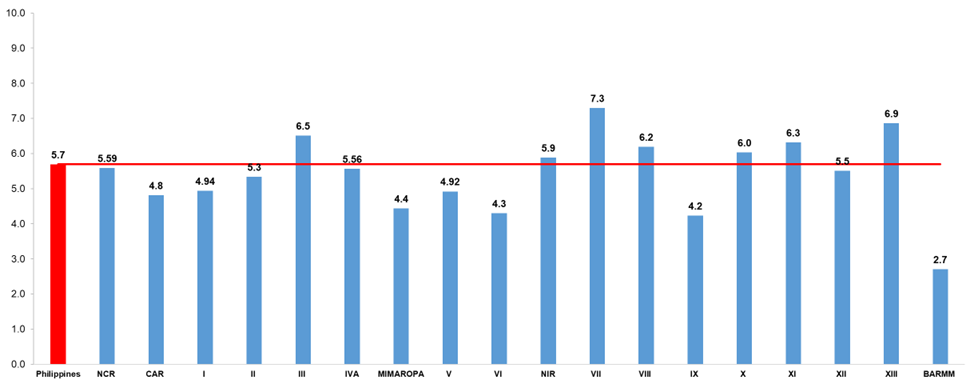The Philippine Statistics Authority (PSA) has released compelling data indicating a widespread economic expansion across the archipelago, with all 18 regions of the Philippines demonstrating positive annual growth in 2024. This signifies a strong and geographically diverse economic performance for the nation.
Spearheading this growth is Central Visayas, which recorded the most rapid expansion at an impressive 7.3 percent (at constant 2018 prices). Following closely were Caraga and Central Luzon, achieving growth rates of 6.9 percent and 6.5 percent, respectively. Notably, these three regions outperformed the national average growth rate of 5.7 percent, highlighting their significant contribution to the overall economic dynamism.
Several other regions also exhibited robust growth, exceeding the national benchmark. These include the Davao Region (6.3 percent), Eastern Visayas (6.2 percent), Northern Mindanao (6.0 percent), and the newly established Negros Island Region (NIR) at 5.9 percent, underscoring a broad-based economic upswing across various parts of the country.
Nationally, the Gross Domestic Product (GDP) experienced a notable acceleration, expanding by 5.7 percent in 2024, an increase from the 5.5 percent growth recorded in the previous year. This positive momentum was largely driven by key industries, with Human health and social work activities leading the way at 10.9 percent growth, followed by Accommodation and food service activities (10.4 percent), and Construction (10.2 percent).
On the expenditure side, significant increases were observed in Gross capital formation (7.7 percent), Government final consumption expenditure (7.3 percent), and Household final consumption expenditure (4.9 percent), indicating strong investment, government spending, and consumer demand as key drivers of economic expansion.
Analyzing regional contributions by sector reveals interesting patterns. The National Capital Region (NCR) held the largest share in Services at 41.1 percent, reflecting its role as the country’s economic hub. CALABARZON and Central Luzon followed with significant contributions of 10.9 percent and 8.3 percent, respectively.
In the Industry sector, CALABARZON emerged as the dominant region, accounting for 24.7 percent of the total share. NCR (18.3 percent) and Central Luzon (16.3 percent) also held substantial shares in this sector.
For Agriculture, forestry, and fishing (AFF), Central Luzon led with the largest share at 14.0 percent, emphasizing its agricultural significance. Northern Mindanao (10.5 percent) and Davao Region (8.3 percent) also demonstrated strong contributions to this sector.
Household spending witnessed growth across all regions in 2024, with Central Visayas registering the highest increase at 7.7 percent, further solidifying its strong economic performance. Eastern Visayas (6.8 percent) and Zamboanga Peninsula (6.4 percent) also experienced significant growth in household consumption.
Government spending saw the most rapid expansion in NCR at 9.9 percent, indicating significant government investment in the capital region. The Cordillera Administrative Region (CAR) (7.6 percent), Western Visayas (7.5 percent), NIR (7.2 percent), and Cagayan Valley (7.05 percent) also recorded notable increases in government expenditure.
Gross Capital Formation experienced the fastest growth in the Davao Region at an impressive 17.0 percent, signaling substantial investment activity. Central Visayas (13.8 percent) and Zamboanga Peninsula (13.4 percent) also demonstrated strong growth in this area.
At the national level, the per capita GDP growth rate in 2024 stood at 4.8 percent, indicating an improvement in individual economic well-being. Central Visayas again led the regional economies with a per capita growth rate of 6.2 percent, followed by Caraga (5.8 percent), Central Luzon (5.6 percent), NIR (5.5 percent), and Eastern Visayas (5.4 percent), highlighting regions where economic growth is translating to tangible benefits for their populations.
This comprehensive data from the PSA paints a positive picture of the Philippine economy in 2024, characterized by robust and widespread growth across its diverse regions and sectors.




